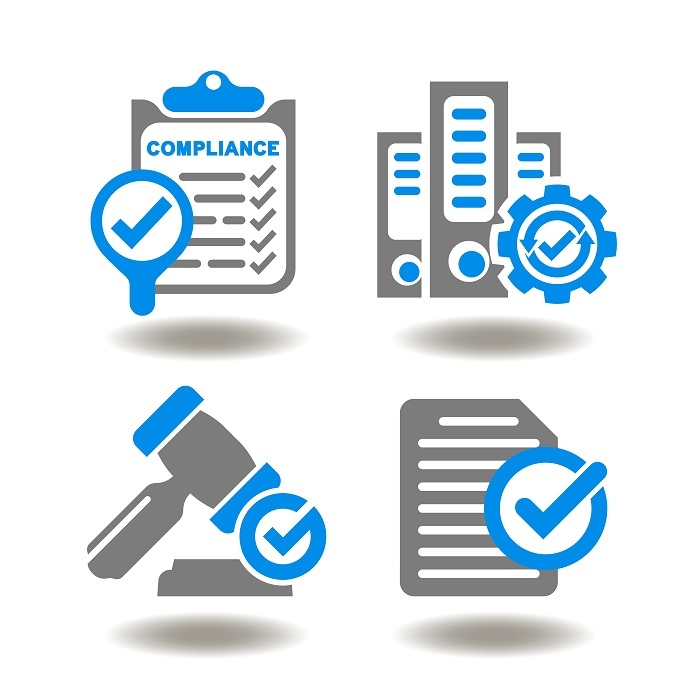
 Data Structure
Data Structure Networking
Networking RDBMS
RDBMS Operating System
Operating System Java
Java MS Excel
MS Excel iOS
iOS HTML
HTML CSS
CSS Android
Android Python
Python C Programming
C Programming C++
C++ C#
C# MongoDB
MongoDB MySQL
MySQL Javascript
Javascript PHP
PHP
- Selected Reading
- UPSC IAS Exams Notes
- Developer's Best Practices
- Questions and Answers
- Effective Resume Writing
- HR Interview Questions
- Computer Glossary
- Who is Who
Risk Register in Project Management
A risk register is a record employed as a financial planning tool to detect probable development difficulties. This approach tries to detect, assess, and resolve hazards jointly prior to them becoming issues. While risk management is typically associated with enterprises, it is also useful in new products and production.

A risk register file, also known as a risk analysis journal, keeps track of possible hazards within an enterprise. It also provides knowledge about the risk's importance and the chance of occurrence.
A risk register for a venture not only needs to recognize and assess hazards but also give concrete mitigations. As a result, if the risk escalates, your group will be equipped with answers and enabled to address the challenges.
When to Use the Risk Register?
A risk registry is useful in a variety of situations. It must typically be utilized (or ready only when requested) in each project. It can be utilized for equally small and big enterprises, albeit the format of your contingency plan will vary based on the extent and sophistication of your operation.
Although a project may simply demand basic threat data such as incidence, importance, and options, a project scope may have about ten distinct letter fields.
Inadequate preference ? Risks such as poor communication and planning mistakes can expose initiatives to scope creep and missed deliveries.
Intermediate documentation ? Unexpected or extra work might lead teams to trouble with efficiency and generate confusing goals.
What Are All the Risks?
Several dangers may occur during the course of a massive job. This form of information security for unanticipated work might put a site's finance and scale in danger. Everyone wants to think about the ramifications of missing deadlines, so it is critical to detect possible problems in advance.
Involve typical risk areas in your risk registration record so you can be ready when they arise. Learn what these dangers are and decide what may apply to your group.
Delay Schedule
If programming mistakes and inefficiencies go unrecognized, they could turn into a major issue when constraints are violated. Timeframe and team planning tools, for example, can assist avoid programming problems at an early stage.
Backlogs in the planning phase might lead to ?
Rushing deadlines? It's worse than a job not being adequately performed, which may lead to unfulfilled targets and poor work.
Ambiguity? Without a solid timetable in play, employees might get swamped and confused.
Creating a timetable may assist in keeping outputs on schedule for both everyday activities and one-time initiatives.
Un-planned Risks
We've each been in situations where work has gone over budget. It's a frequent danger that is easily mitigated if correctly monitored. Detecting unforeseen processes as soon as possible helps you to correctly allocate the responsibility to the project manager.
Besides a suitable risk register, you may encounter ?
Skipped objectives: If the material falls between the gaps, you may end up skipping a timeline entirely.
Occupational stress can result from overscheduling your teammates with unnecessary work, which can generate stress and perhaps even a heavy workload and stress. That is why it is critical to properly define projects.
If you have problems with unexpected work, creating a modification control technique might assist you in communicating the work required to your employees.
Identifying the Risk
The evaluation of the threat is one of the initial items in a risk assessment. Typically, this entails the use of a risk name or registration number. An identified risks field must contain the following information
The time of recognition
If necessary, a description works.
Explaining the Risk
Once the verification is done, write a brief explanation on your record. A risk assessment must contain the following information
A brief, rising summary of the hazard
The reason why the danger is a possible issue?
The amount of your entries is determined by how extensive you wish your journal to be, although the usual size is 80 to 100 lines.
A summary may convey the major aspects of the danger and the reasons why it is a possible concern, rather than just the size. The essential message is that a statement should correctly represent the danger without being too technical in order for it to be easily caught.
Categorization of the Risk
There are different financial intermediation that might assist detect possible risks rapidly. When operating on a massive task with various hazards, quickly recognizing the risk allows you to delegate it to the appropriate team. Any of the following might be classified as a risk category ?
Transactions
Spending plan
Itinerary
Innovation
Knowledge
Protection
Performance
Mission Strategy
To identify the classification type, you must first assess where the threat is emanating from but nobody can assist in resolving it. If the answer is not evident, you might need to collaborate with team members.
Risk Likelihood
If hazards are identified well sufficiently, the group may be capable of resolving them before such a meaningful intervention is necessary. As a result, it is conceivable that the concerns indicated on your safety registry will not become issues.
Classifying your hazards by probability might assist you to determine which concerns to address first and how much to postpone.
Analyzing the Risk
A risk analysis assesses the probable effect of the risk on your business. This aids in swiftly identifying the most critical hazards to address. This should never be confused with precedence, which considers both incidence and assessment into effect.

Whether you're having trouble determining the overall risk, you might wish to obtain a piece of expert advice by consulting with a team leader. This allows you to correctly estimate the magnitude.
Mitigation of Risk
Several of the most significant components of an identified risk is a risk control strategy, often known as a risk management program. Even so, the aim of a risk control strategy is to locate and reduce potential hazards. It is, in essence, a plan of action. A risk reduction strategy should incorporate the following elements
A process guide to lowering the danger
A concise explanation of the expected conclusion
What Effect the Strategy Will Have?
Though some hazards are simple to avoid, others are far more complicated and have no clear answers. In this scenario, the prevention method will necessitate some collaboration. This often occurs outside of the risk analysis paper, such as at a conference or team discussion.
Risk Ownership
Because once the risk has occurred, been analyzed, and prioritized, the preventive objectives must be assigned to be delivered. Risk responsibility ought to encompass the following
The one in charge of overseeing the delivery of projects.
If necessary, any extra crew members
The risk management field can assist in swiftly determining which division would manage the risk. It might also aid in visualizing which colleagues are responsible for various risks.
Additional Risk Set-ups
Risk trigger ? Having a risk trigger entry can assist you in determining why only risk occurred and stop potential risks.
Though many chances are on the pessimistic aspect of the spectrum, there is also a chance for a favorable outcome. You may add a section for a high or low answer in this scenario.
Synopsis ? To keep data in a single place, put the reduction plan's timetable or schedule inside the record. Event software is an excellent resource for this.

